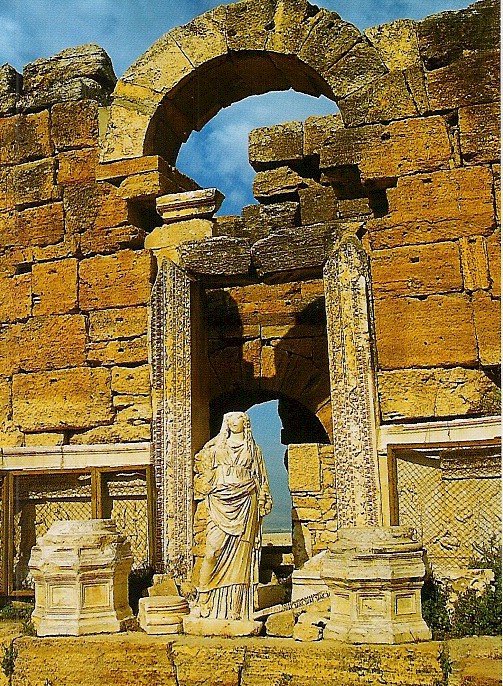 |
|
| Welcome to Turizm.net! |
THE TEMPLE OF APOLLO The discovery of this temple of Apollo was one of the most remarkable achievements of the Italian excavation team. The first thing to be revealed in the excavations carried out in the southern section of the remains, which were almost entirely buried under the soil, was the Plutonium, consisting, as Strabo had described it, of a fissure located behind the temple. Here they found a chamber 3 min size and behind this, flowing out very rapidly from the fissure, there emerged a stream of water giving off a very pungent- Mopsus, who possessed the gift of being able to foretell the future, was a hero who settled in Claros after the Trojan War (l2th13th century B.C.). Although the idea that a Mopsus is represented on the coins minted in Hierapolis, and he was also connected with Torrhebus, another mythical personage. Torrhebus is also the name of a city in the province of Lydia and a temple of Carius is located on a mountain nearby. Acording to the legend, the hero Torrhebus learned music from the Muses while walking by the edge of the lake and taught it to the Lydians. (In Greek mythology the nine Muses were daughters of Zeus, and each taught and encouraged various arts such as poetry, dance and rnusic.) The lake in question lay a little north of the city of Sardis and may very well have been the present-day Golcuk about 100 km north-west of Hierapolis. The citizens of Hierapolis obviously invented for themselves a legendary past that included such personages as Mopsus, Clarius, Apollo, Torrhebus and Careius. (As the coins testifying to these connections were minted in the middle of the 2nd century A.D. it would appear that they were in some way related to the oracle in the temple, but, on the other hand, it is significant that the hundreds of delegations to Claros during the Imperial period included not a single delegation from Hierapolis. The worship of Artemis and of Ephesian Artemis in the city is connected with Apollo. Artemis is included in the hierarchy of gods as the sister of Apollo, while in mythology Ephesian Artemis was one of the most powerful goddesses in the region. |
| |

